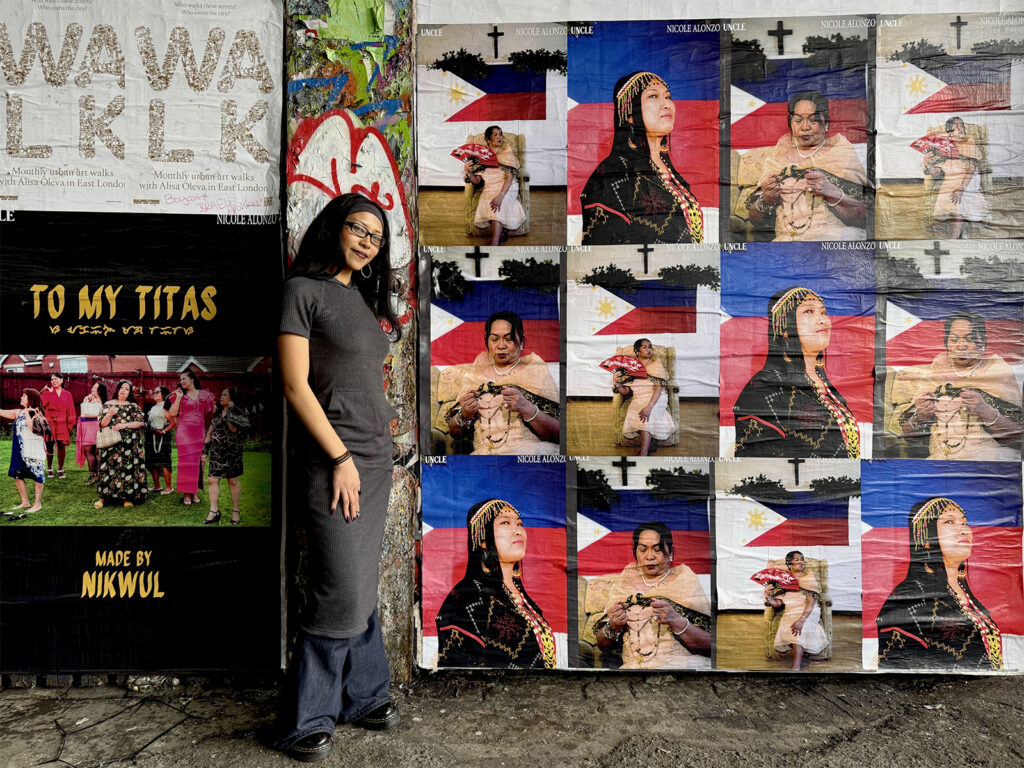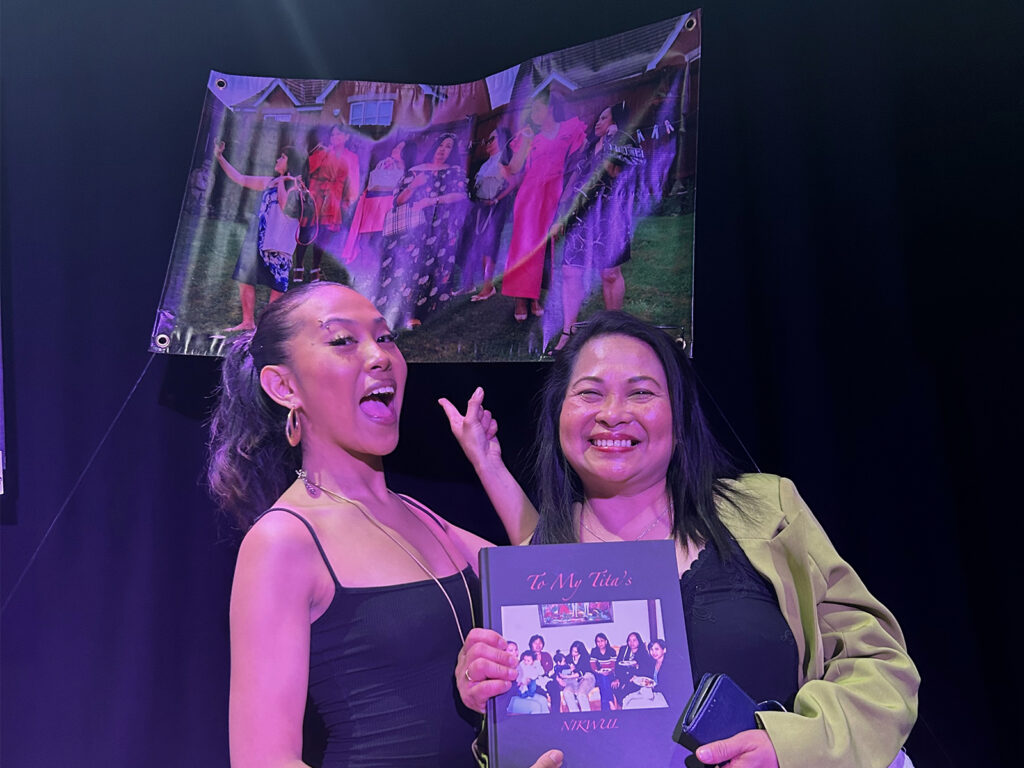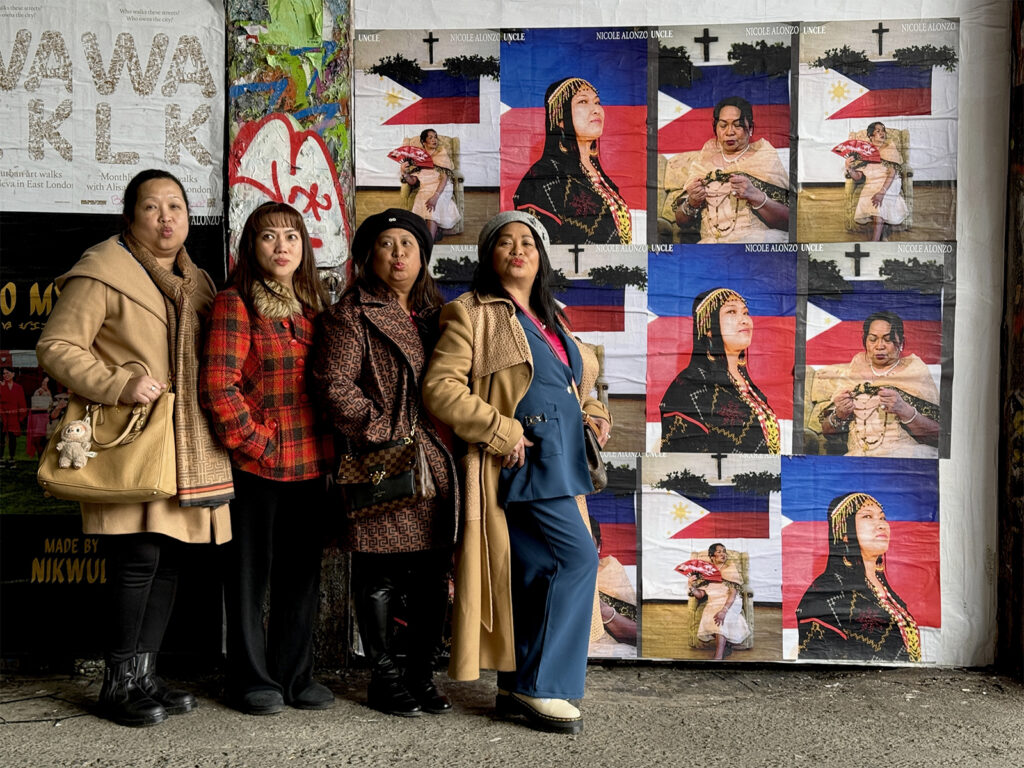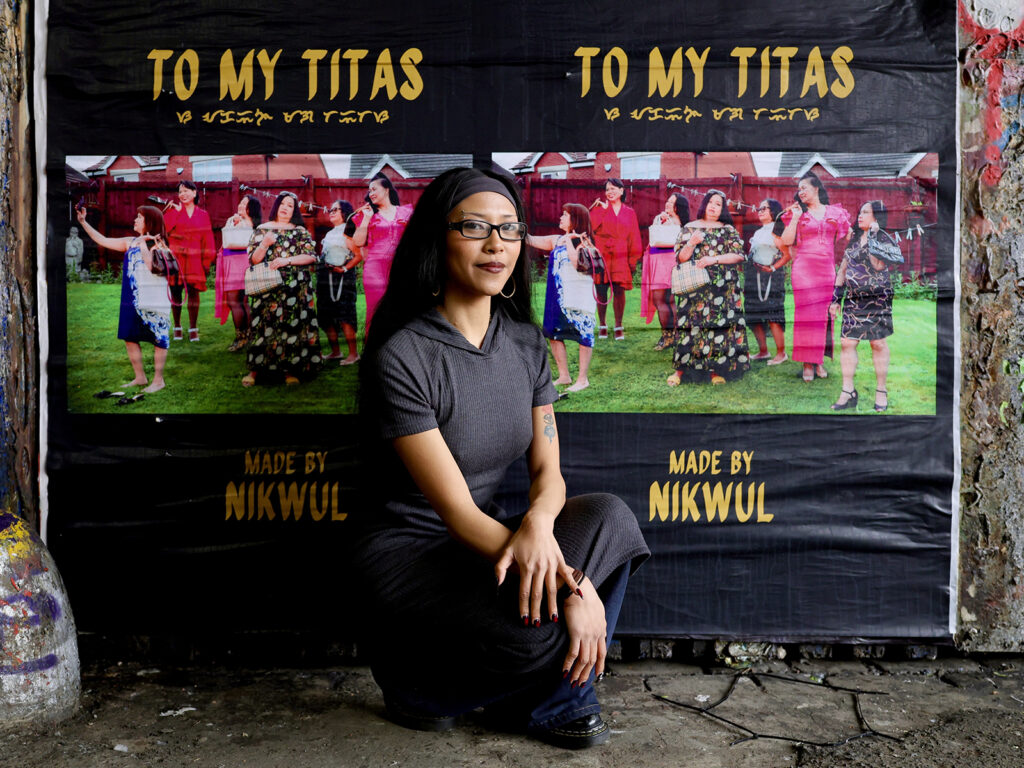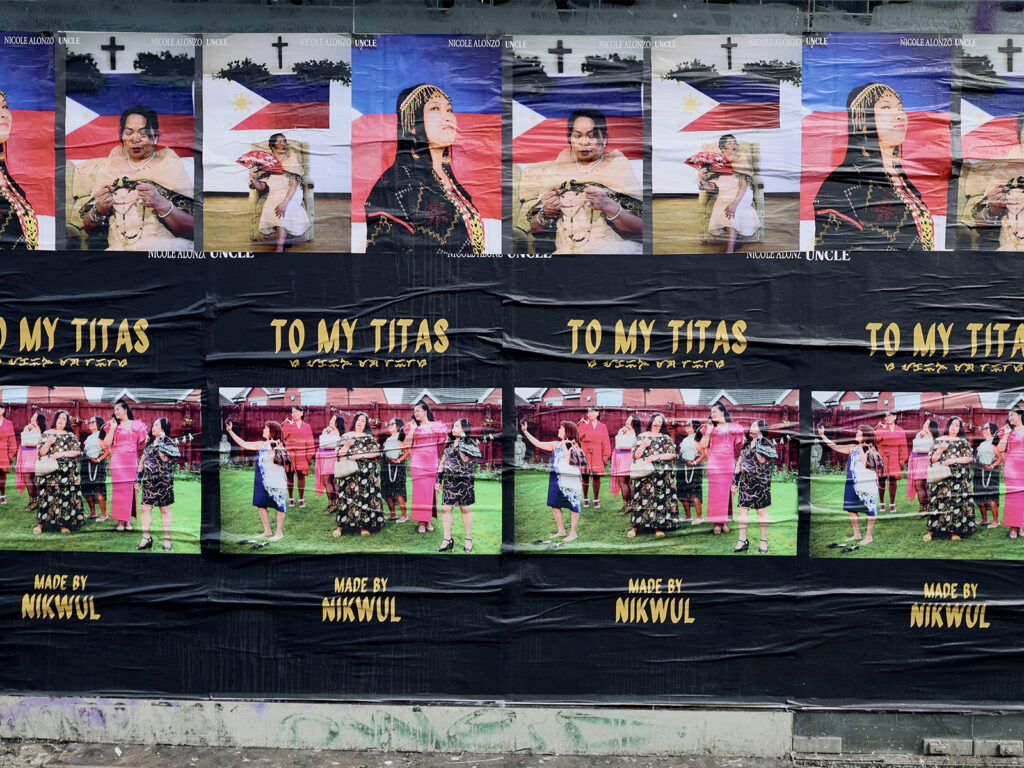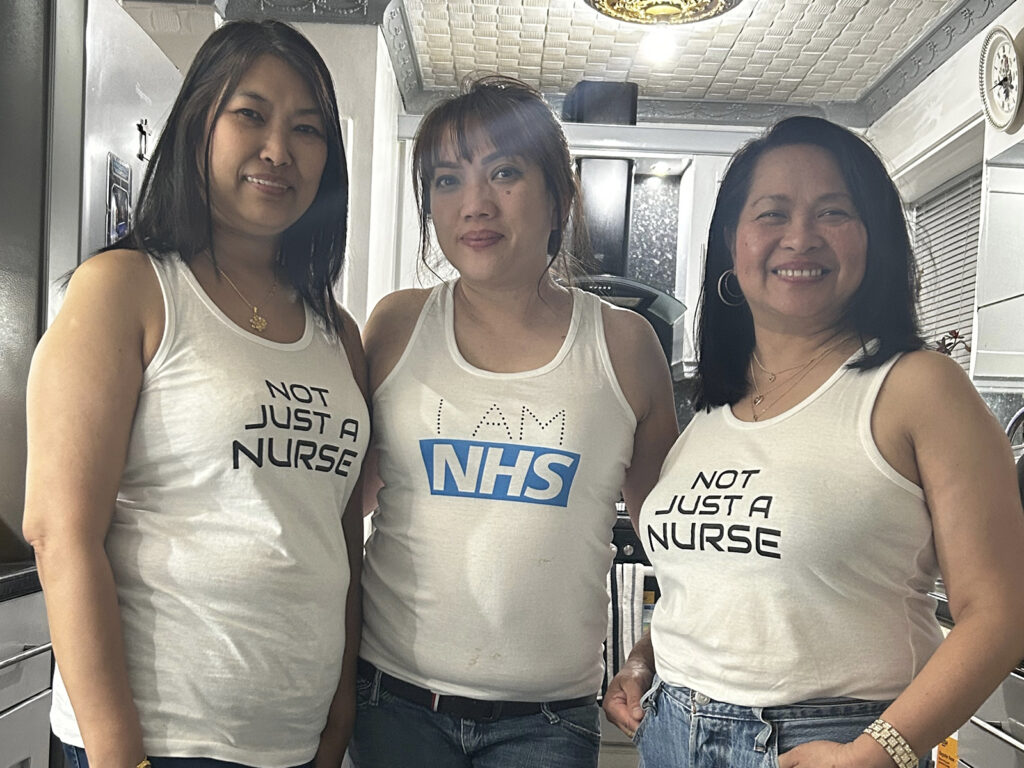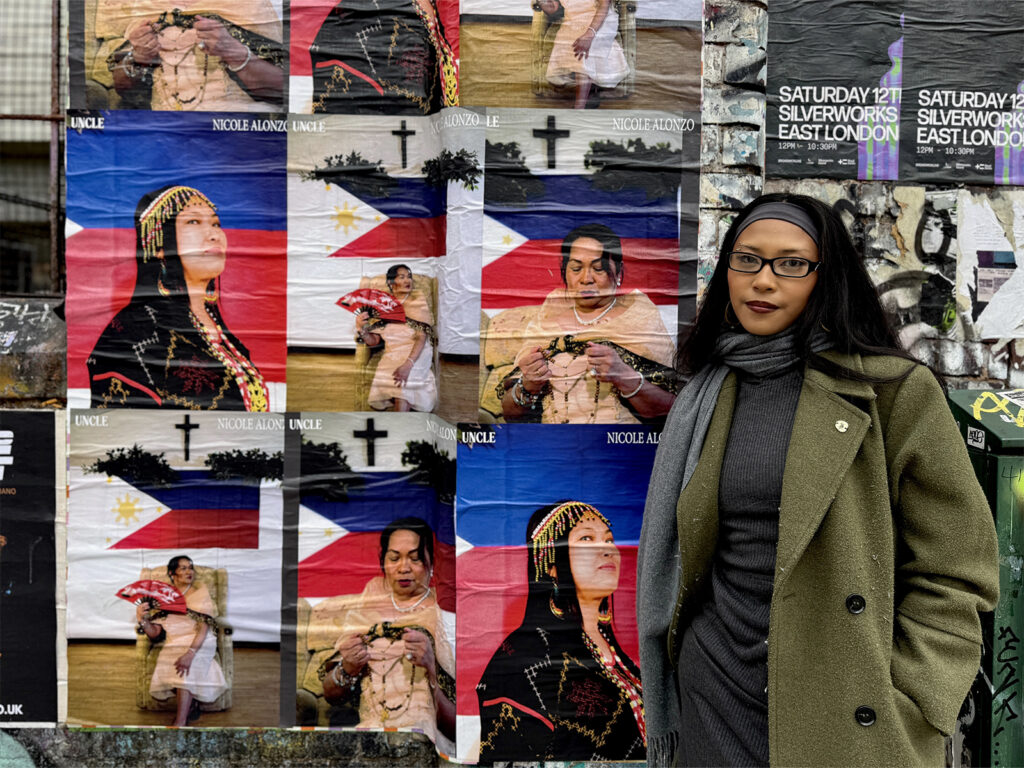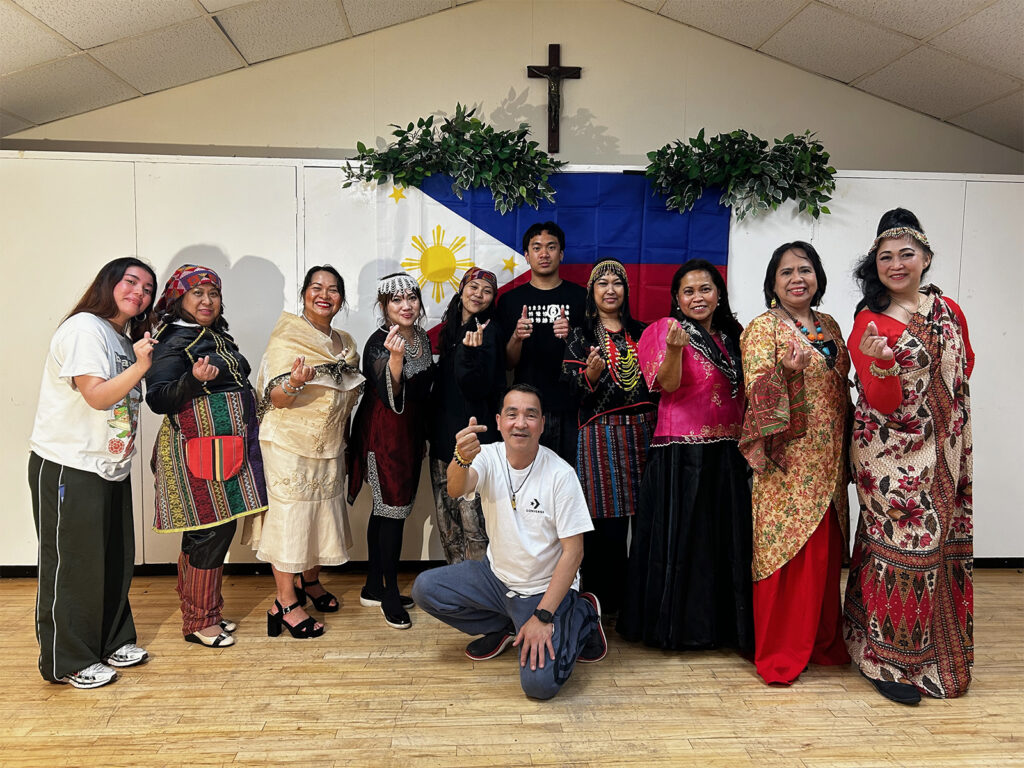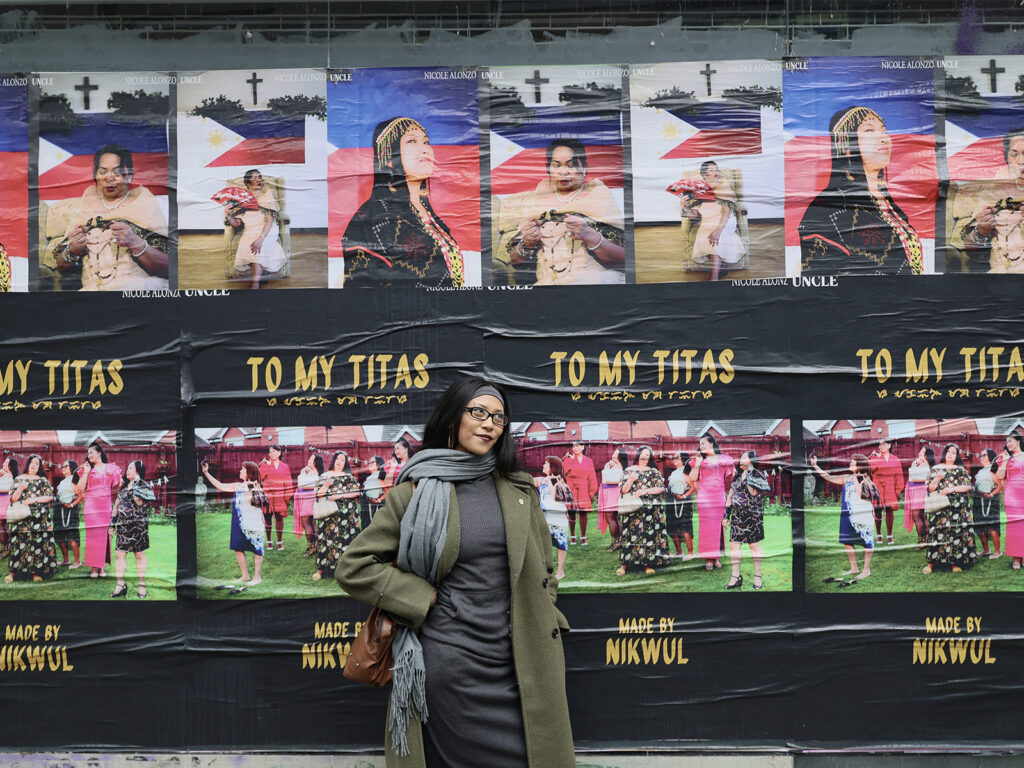









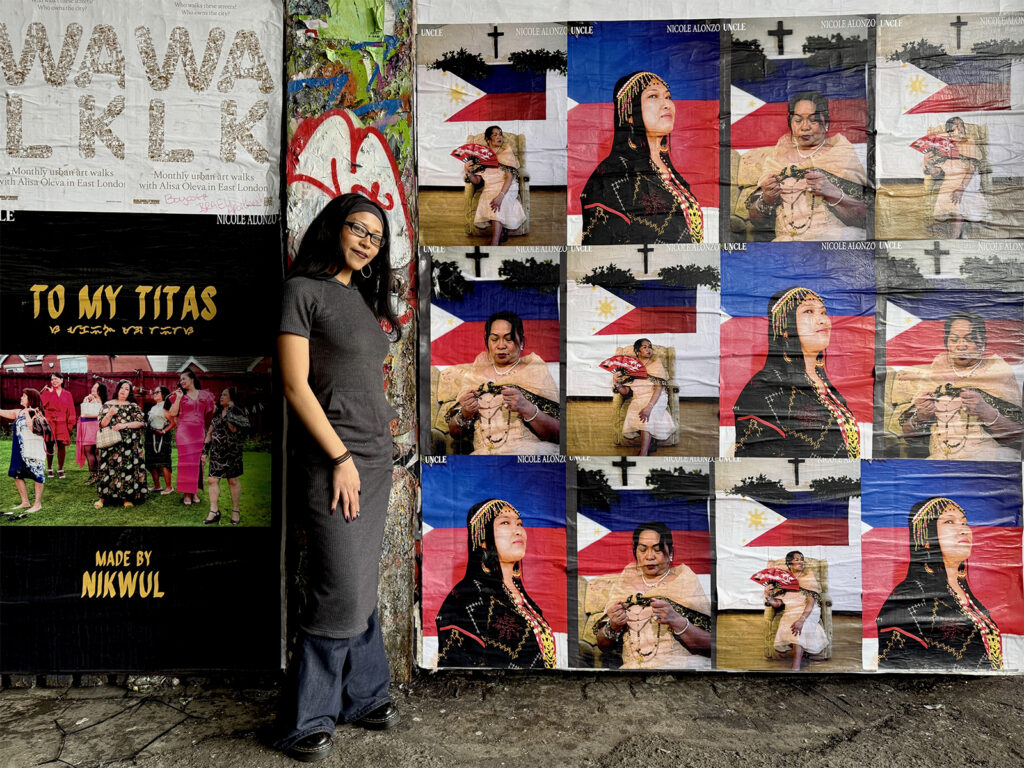
Style isn’t just about clothes – it’s about presence, attitude, and the stories woven into every fabric choice, accessory, and perfectly curated look. To My Titas is a bold, fashion-forward tribute to the Filipino aunties who have been serving effortless elegance long before social media made it a trend. In partnership with UNCLE, this photobook isn’t just a celebration of their impeccable style – it’s a love letter to the culture, resilience, and quiet power of a generation of women who’ve always understood the art of showing up and showing out.
But this project goes deeper than just aesthetics. To My Titas merges editorial fashion photography with raw, personal storytelling, highlighting the lives these women have built far from home while carrying their heritage with them in every detail. From church hall gatherings to house parties fuelled by karaoke, the book captures the energy, tradition, and community that shape Filipino identity in the diaspora. It’s an intimate yet strikingly stylish look at how fashion and culture intertwine, proving that heritage is never out of style.
In this interview, we sit down with the creative force behind To My Titas Nicole Alonzo, to talk about the vision, the process, and the beautiful chaos of working with a group of legendary, Facebook-loving aunties. From deep cultural connections to high-fashion influences, this conversation is about more than just a book – it’s about the power of representation and why these stories need to be seen. Let’s get into it.
WHAT INSPIRED YOU TO CREATE TO MY TITAS? WAS THERE A PARTICULAR MOMENT OR EXPERIENCE THAT SPARKED THE IDEA?
I remember having a conversation with my girlies, who come from different ethnic backgrounds to me, and we got to talking about how fashionable and stylish our aunties are. Down from the jewellery, to the designer bags, the extravagant cultural attire they like to wear to church, or how well they hold themselves when wearing their Sunday’s best. I chose to do a photobook because I go to photobook stores to get inspired or feel some type of relatability through visual storytelling and realised there were no photobooks about my Filipino heritage. I felt a need to put my country on the map.
TELL US ABOUT SOME THEMES IN THE BOOK. HOW DID YOU DECIDE ON THE VISUAL AND NARRATIVE ELEMENTS TO ACHIEVE THIS?
I have a love for fashion imagery and clothing since I was a young kid. I currently study a fashion communication course at UAL and I know that visual storytelling through fashion editorial style is how I best express myself. However, besides the fashion imagery and clothing aspect of my photobook, I understood the importance of interviewing these amazing women and collecting cultural artifacts that they brought to the motherland, to represent their stories properly. I really wanted to celebrate their lives that they’ve made in England and their relationships with each other. These themes include our love for karaoke. Every time I go to a Filipino house party, there’s karaoke.
WHAT WAS THE PROCESS LIKE FOR SELECTING THE TITAS FEATURED IN THE BOOK? DID YOU FACE ANY CHALLENGES IN CAPTURING THEIR STORIES?
In terms of process, I grew up in a strong Filipino community in Nottingham. My father is the chairman of the Nottingham Filipino Community and so the Titas in my photobook are women who have seen me grow into a woman. In my culture, you call everyone auntie or “Tita” even if they aren’t by blood, but by culture and community, they are. The biggest challenge for me was getting all my aunties in one place lmao, they’re very busy women. I had to do a lot of Facebook messaging and physically going to their houses to interview them. I am currently based in London, so I had to go back and forth to where I am originally from, which is Nottingham, just to talk to my Titas. They love their Facebook.
HOW DO YOU HOPE TO MY TITAS WILL IMPACT PERCEPTIONS OF FILIPINO WOMANHOOD?
I hope it will help people realise that no matter what culture or community you’re from, we’re all the same. We all have at least one auntie who is always dressed to impress. I also just wanted to celebrate my culture by looking at traditional perspectives and contemporary perspectives that a young Filipino person would be able to look at and feel seen. I guess I just want people to know how proud and strong our women are.
CAN YOU SHARE ANY STANDOUT STORIES OR MOMENTS FROM WORKING ON THIS PROJECT THAT RESONATED WITH YOU IN PARTICULAR?
For me, my most standout moments were being in a shoot with all my aunties. They bring such vibrant energies and this sense of ‘diva’-ness to a room that I just adore.
HOW HAS YOUR OWN BACKGROUND INFLUENCED YOUR CREATIVE PRACTICE?
My own background has influenced nearly everything I do in my creative practice. I think I was so excited to get out into the world and step into the fashion industry and then quickly realised that most high-end fashion spaces made me feel like I wasn’t allowed there unless I was known. Of course, this is slowly changing but the exclusion is definitely still there. Due to this, it forced me to look within and really understand what niche communities speak out to me and accept me as a creative. In turn, this project is a rebellious act to the fashion industry. One, mature women and people deserve to be in the fashion limelight as much as young people because they love fashion too, and two, my culture is equally as fashionable and elegant through our clothing.
IF YOU COULD DESCRIBE TO MY TITAS IN THREE WORDS, WHAT WOULD THEY BE?
Strength, Adaption, and Style.
IF YOUNGER FILIPINO ARTISTS WANT TO EXPLORE THEIR HERITAGE THROUGH STORYTELLING, WHAT ADVICE WOULD YOU GIVE THEM?
Look at the people around you, create work with the communities you already have. There is so much beauty in it that you may not notice because it isn’t on a campaign ad. Obviously, dream big but don’t forget your roots or who you are along the way. Bring those attributes with you to the industry; it will set you apart from the others.
TALK US THROUGH THE ARTWORK OF THE CAMPAIGN?
One of the artworks for the campaign is the front cover of my photobook, which showcases all my aunties in one photo wearing their best-dressed clothing, all in different colours and designs that best describe their individual personalities. I wanted the location to scream Britain, but the poses, style, designer bags, and jewellery to scream fashion! My auntie on the left took her shoes off mid-shoot because they annoyed her and decided to take a photo because she can, on her Facebook, and I knew that capturing that moment would best describe these women and our culture from a contemporary perspective. The rest of the artworks were taken in my local church while wearing our cultural attire to showcase our local church hall in Nottingham. A lot of events hosted by the Nottingham Filipino Community have happened in that church hall, so it’s a very sentimental space for my aunties and me. Our cultural attire is equally as sentimental to us as Filipinos away from home, so I knew to capture both of these important elements together to best describe our culture to London.
HOW HAS LONDON INFORMED THE PROJECT?
London is a very multicultural city, filled with such beautiful heritages living together in one place. Living here forced me to look at my heritage and how my community has shaped me as a creative growing up in the Midlands.
WHAT PARTS OF THE CITY INSPIRE YOU?
I currently live in Whitechapel, and the Bengali community there is strong. However, even though we have cultural differences, the themes of family, community, and styling (down to their traditional clothing shops, which I always adore every time I walk past them) are all the same. In such a big city, a niche community is what makes you feel connected, and it made me think of mine back at home in Nottingham.
WHAT’S NEXT FOR YOU AS AN ARTIST? ANY UPCOMING PROJECTS WE SHOULD LOOK FORWARD TO?
As an artist, I am currently working on my next project, which is creating a physical exhibition curated by BAME women who live in the Midlands, who love fashion and also take inspiration from their cultural heritage. I am planning to have this exhibited in Nottingham because nothing creative happens there. Not because there isn’t creative talent, but because there’s no funding that goes to those regions as they’re all being pumped into London. Therefore, I am planning to create this exhibition to showcase the amazing BAME women creatives in Nottingham
